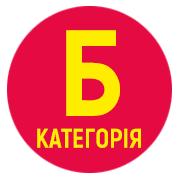VESTIBULAR STABILITY IN THE PROCESS OF DEVELOPMENT OF COORDINATION SKILLS IN 5–6-YEAR OLD CHILDREN
DOI:
https://doi.org/10.32782/olimpspu/2023.1.1Keywords:
coordination abilities, vestibular stability, motor activity, physical education, childrenAbstract
The article is devoted to researching the level of vestibular stability of older preschool children and studying the influence of children’s vestibular stability on the level of development of their coordination abilities. Among all physical abilities, the most relevant for this age group is the development of coordination abilities. Firstly, it is the development of coordination that affects the improvement of the child’s motility and his learning of many motor skills. Secondly, older preschool age is a sensitive period for the development of coordination abilities. The purpose of the study is to investigate the influence of vestibular stability on the level of development of coordination abilities of older preschool children. Research methods: analysis of scientific and methodical literature on research issues, testing, methods of mathematical statistics. According to the results of testing of vestibular stability, the children were conditionally divided into three groups: with normal indicators; with average indicators; with low or zero indicators. After conducting the test to assess the level of development of children’s coordination abilities, the average score for the performance of three test exercises on coordination was calculated. In the course of the conducted research, it was found that the level of vestibular stability of most children aged 5–6 years is at a level lower than average, and only in a small number of children it reaches the physiological norm for this age. The reason for this may be, first of all, a lack of motor activity, because movement has a comprehensive effect on human organs, and this effect is necessarily higher for a child’s body, which is growing and developing. Therefore, it is necessary to pay special attention to whether enough attention is paid to the physical education of children, as well as to the content of those programs on physical education, according to which preschool educational institutions work today.
References
Болобан В.Н. Спортивна акробатика. Київ : Вища шк. 1988. 163 с.
Вільчковський Е.С., Денисенко Н.Ф. Організація рухового режиму дітей дошкільних навчальних закладів : навчально-методичний посібник. Тернопіль : Мандрівець. 2008. 128 с.
Вільчковський Е.С. Теорія і методика фізичного виховання дітей дошкільного віку. Львів : ВНТЛ. 1998. 336 с.
Сергієнко Л.П. Практикум з теорії і методики фізичного виховання : навчальний посібник для студентів вищих навчальних закладів фізичного виховання і спорту. Харків : ОВС. 2007. 270 с.
Уилмор Дж.Х. Фізіологія спорту / пер. з англ. Київ : Олімпійська література. 2001. 504 с.
Яворська Т.Є. Гармонійний розвиток дитини дошкільного віку в процесі використання оздоровчих інноваційних технологій. Слобожанський науково-спортивний вісник. 2013. № 5. С. 300–303.







